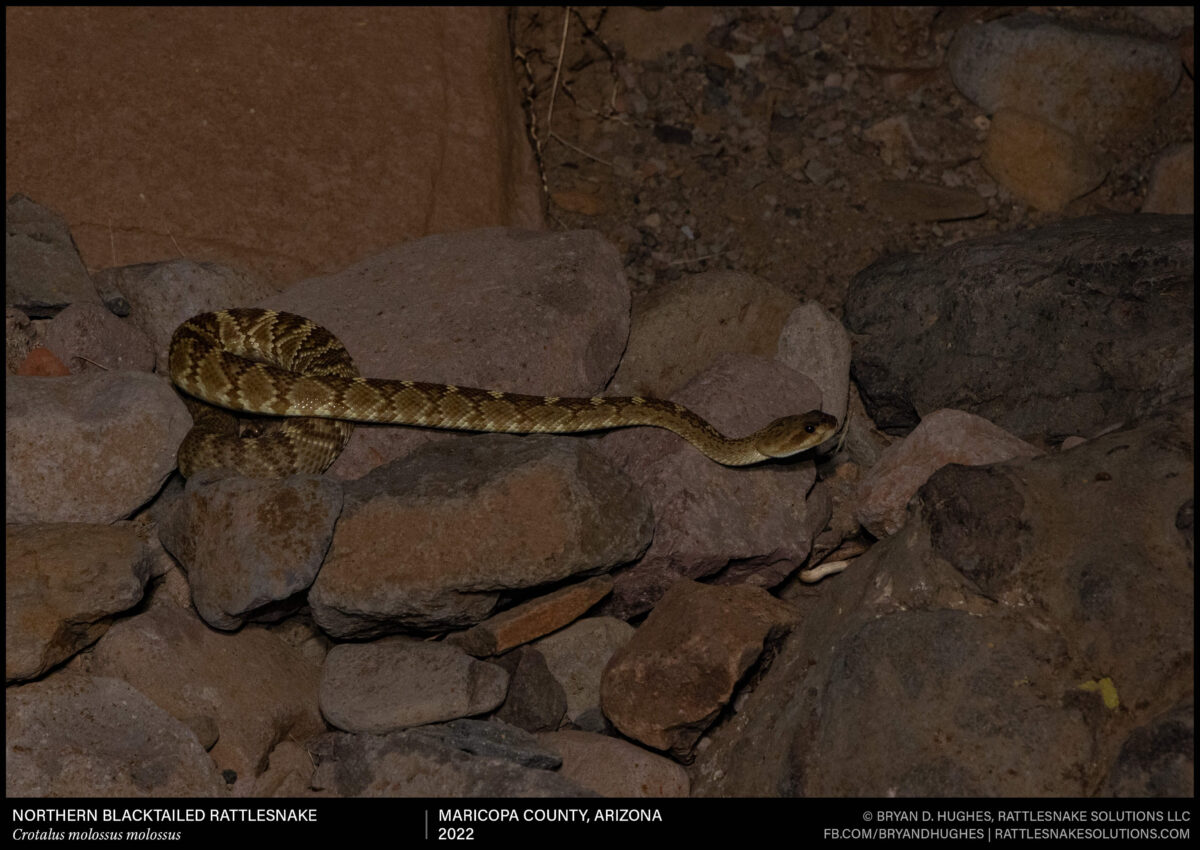One of a few Arizona Black Rattlesnakes hanging out at an overwintering site, ready and waiting for the cold to come. This was photographed in the fall at high elevation, where rattlesnakes gather in sometimes large numbers to den together in deep retreats.
This species is what locals often mistakenly refer to as “Timber Rattlesnake”, which it is not. Timber Rattlesnakes are a real snake, however, but not closely related to this one, and not found in the Western US.










